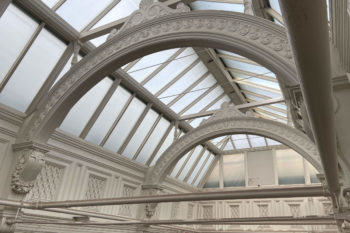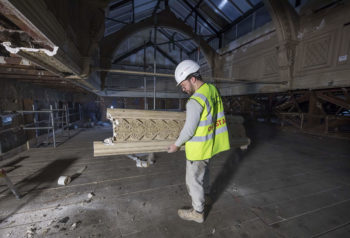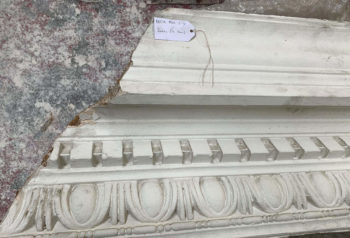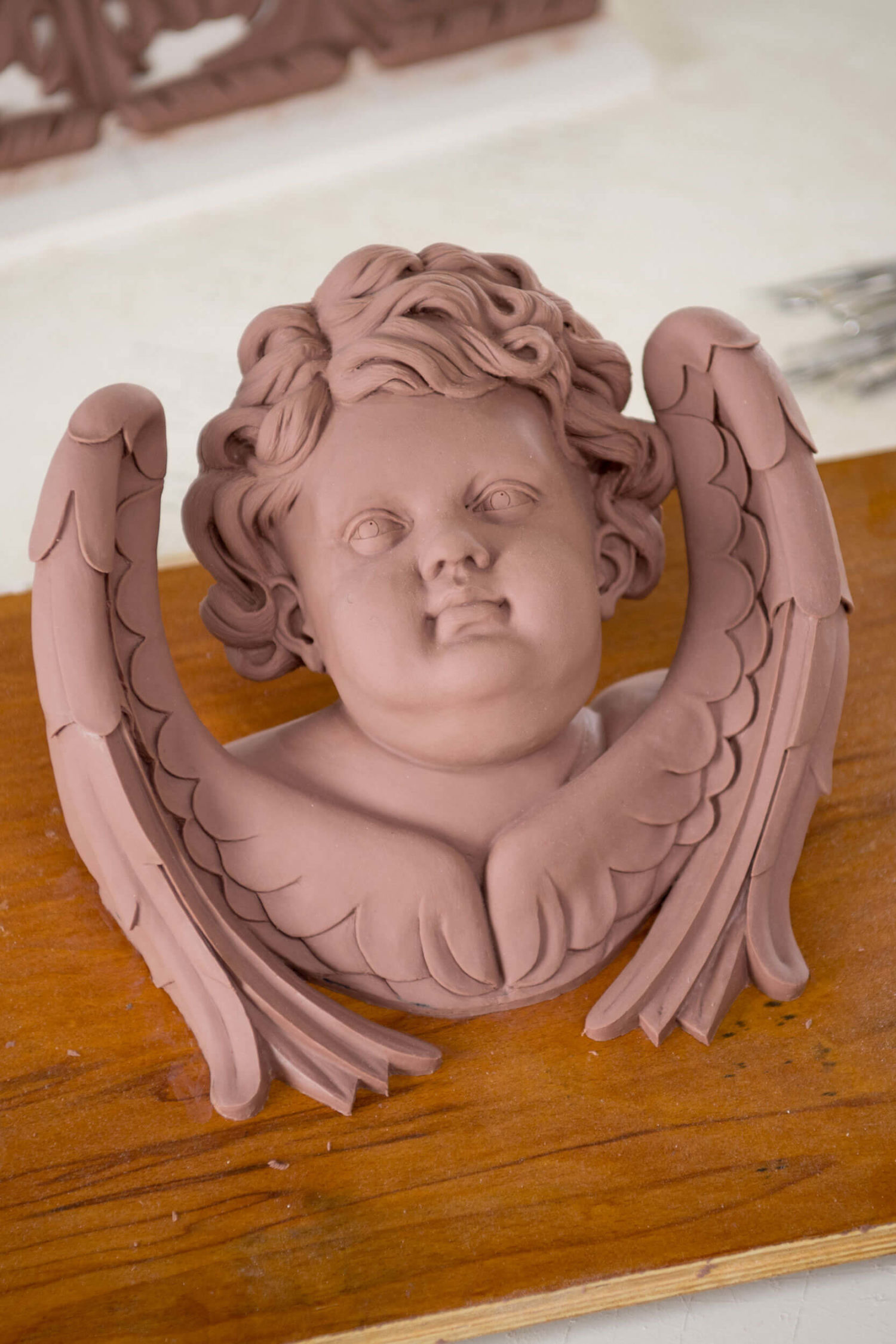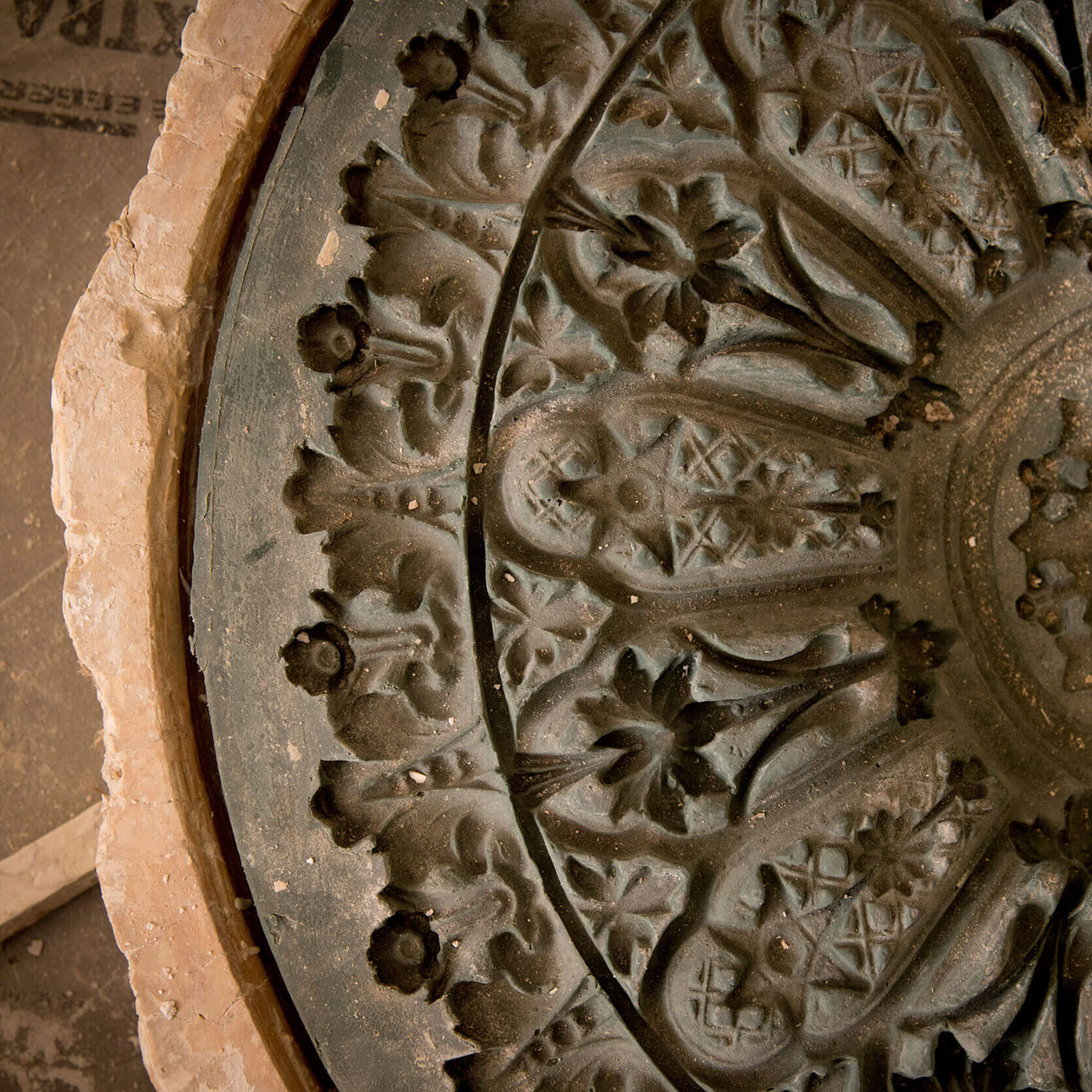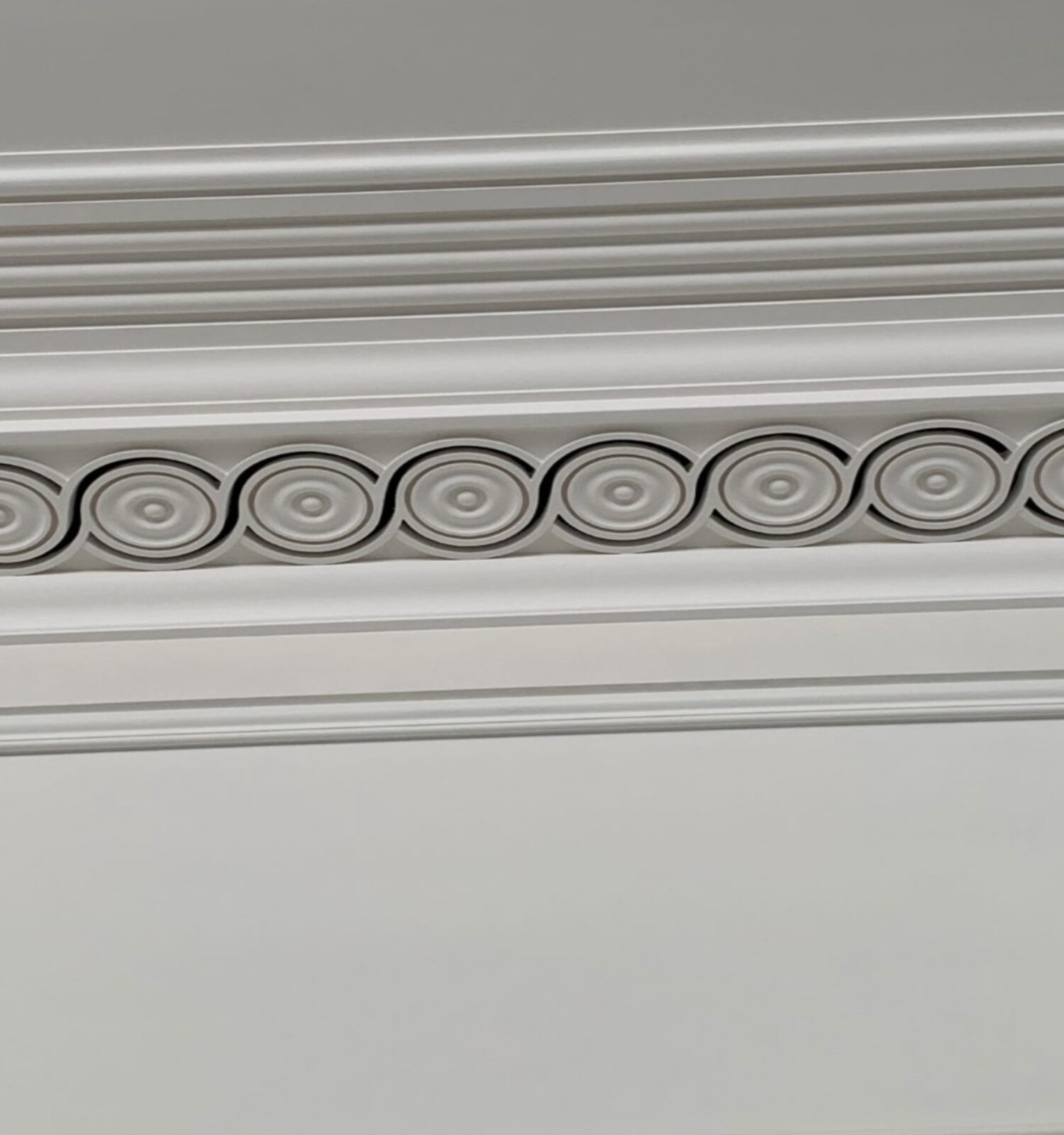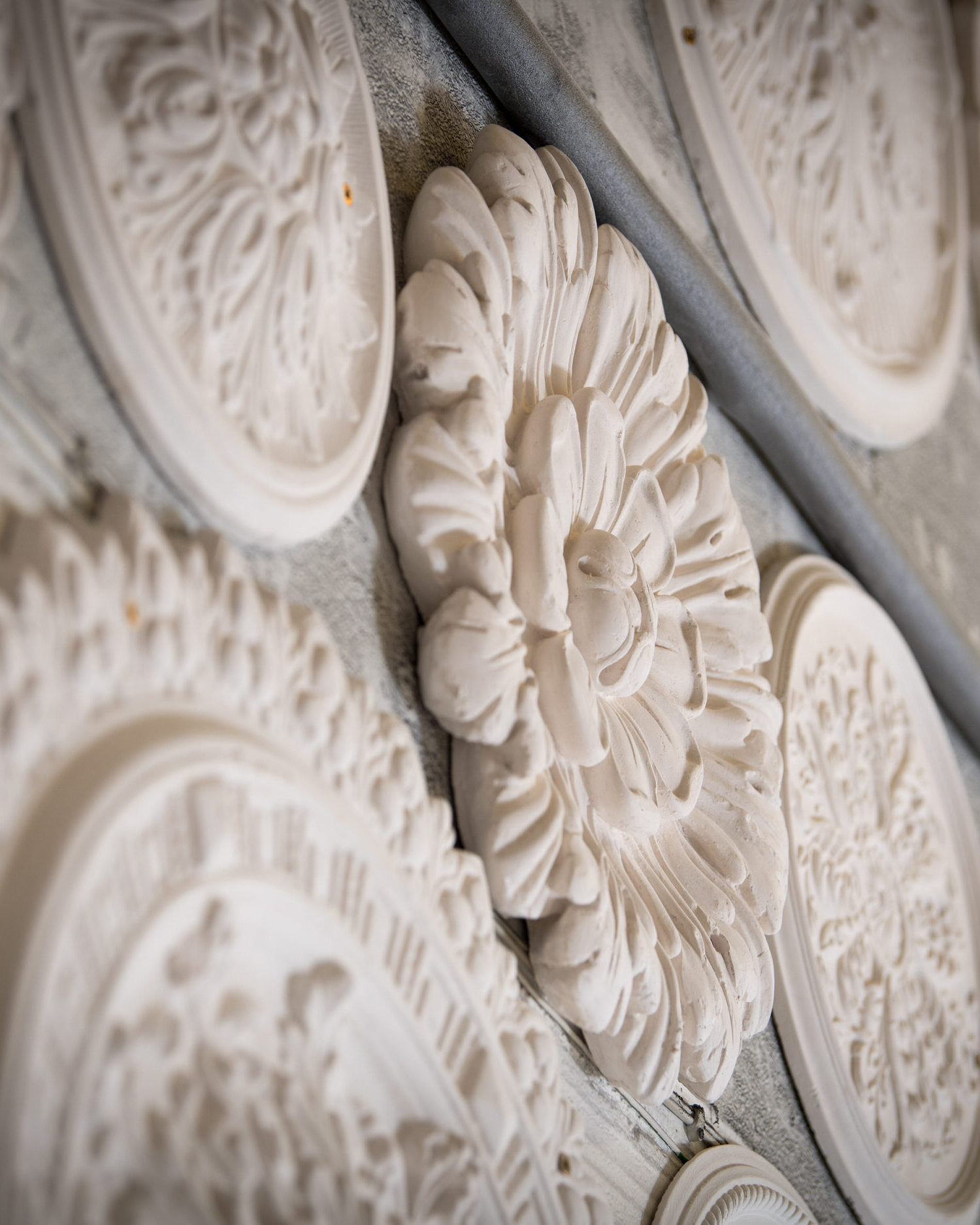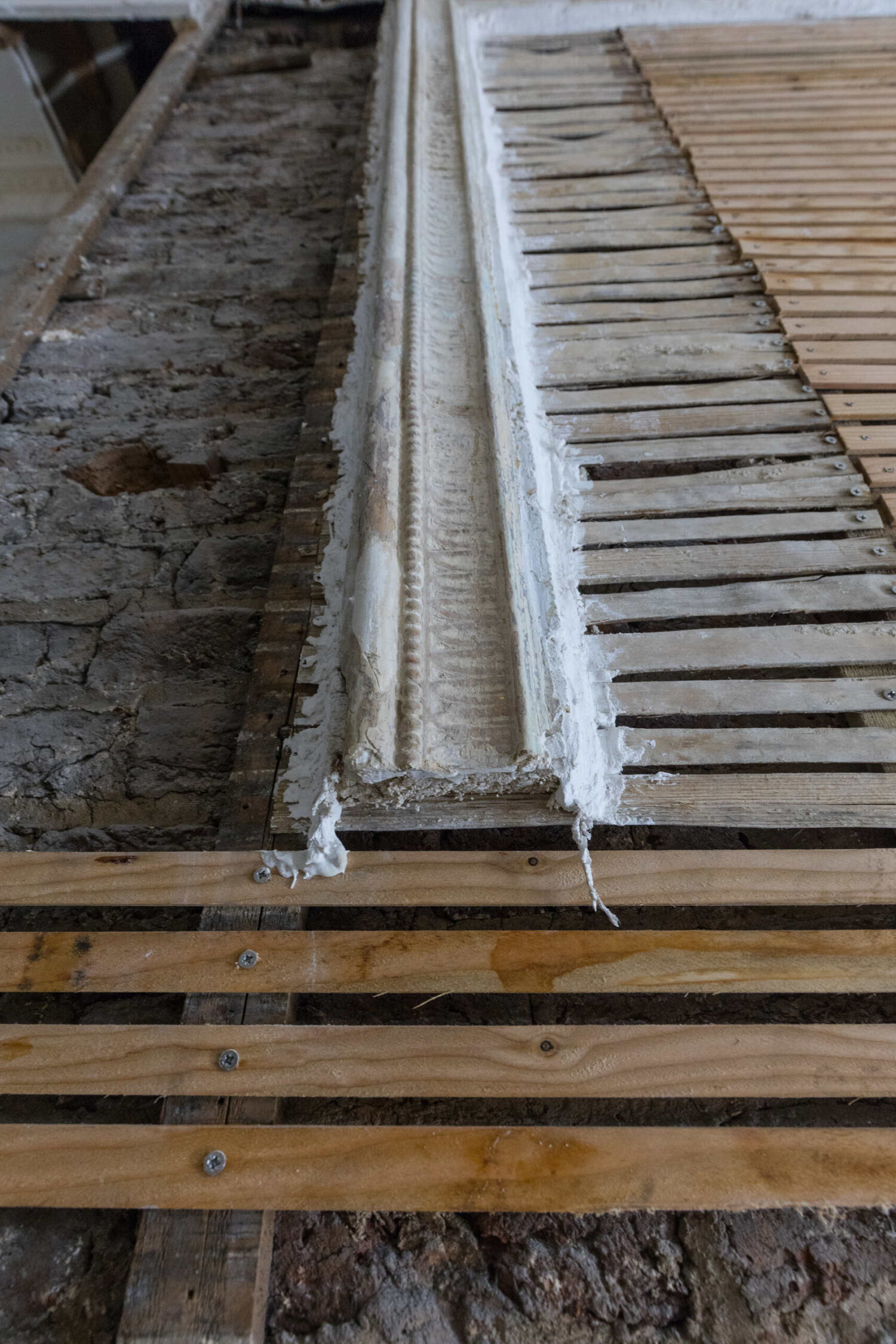Fine Art Mouldings was commissioned to restore the fibrous plasterwork in the roof lights of the iconic Grade II listed BAFTA building in London, originally built in 1883 to house the Royal Institute of Painters in Water Colours. The architect proposed creating a new top floor that reintegrated the two large Victorian roof light spaces, raising the historic decorative plasterwork three metres and enclosing the space with innovative high-performance liquid-crystal glazing, giving spectacular views over the area.
Our team started the ornamental plaster restoration by removing the existing plaster, carefully removing the historic finishes to the roof light structure and learning along the way how they were constructed after only very limited investigations allowed prior commencement of to the works.
As Samuel Barry said, “It’s a bit like archeology, though on a live building, as the roof lights had been hidden for over 50 years. Finding out how they were put together and piecing together their history – as well as finding the occasional old artefact – was pretty exciting.”

